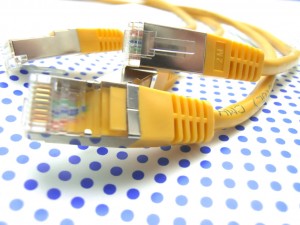5 Reasons To Choose Hosted Quickbooks For Your Accounting Needs
 Can’t seem to choose between Quickbooks Online and Hosted Quickbooks? It’s a common assumption that these two services are the same. While they share some similarities, however, Hosted Quickbooks offers several benefits that aren’t found in Quickbooks Online. To learn more about Hosted Quickbooks and why you should choose it, keep reading.
Can’t seem to choose between Quickbooks Online and Hosted Quickbooks? It’s a common assumption that these two services are the same. While they share some similarities, however, Hosted Quickbooks offers several benefits that aren’t found in Quickbooks Online. To learn more about Hosted Quickbooks and why you should choose it, keep reading.
#1) Access Quickbooks Anytime, Anywhere
Hosted Quickbooks is stored on the cloud, meaning you can access your account from anywhere in the world, at anytime you choose — assuming you have an active Internet connection. This alone makes Hosted Quickbooks worth the investment, but there are several other benefits worth noting.
#2) Use Existing Quickbooks Licenses
Unlike Quickbooks Online, Hosted Quickbooks allows customers and clients to use their existing desktop-version Quickbooks licenses. The license is simply transferred to the company or third-party vendor offering the hosting services. Once activated, clients can continue using their Quickbooks without the need for a second license.
#3) Automatic Backups
There’s nothing more frustrating than spending countless hours performing accounting work in Quickbooks only for your hard drive to crash, resulting in a loss of data. This type of nightmare scenario can be avoided by using Hosted Quickbooks. The hosted version of Intuit’s Quickbooks software comes with automatic backups, so you don’t have to worry about hardware malfunction, system crashes, viruses, etc. In the event that you lose your data, you can rest assured knowing it’s backed up on the cloud.
#4) Faster Updates
You might be surprised to learn that authorized hosts are the first to receive new Quickbooks updates. Intuit gives authorized hosts first class treatment, allowing them to deliver new versions of the software to their customers and clients. Why is this important? Well, these updates may improve performance, fix bugs and vulnerabilities, add new features, and create a better all-around environment for users.
#5) Easier To Set Up and Use
Hosted Quickbooks is easier to set up and use than traditional desktop versions of Quickbooks. When a user purchases a desktop version of Quickbooks, he or she must manual install it on their own computer. This takes time, patience and some basic understanding of the software. Hosted Quickbooks, on the other hand, is done completely by the respective hosting company or vendor. They’ll take care of the leg work associated with installing and setting up Quickbooks, eliminating the need for manual installations.
How To Change Account Numbers In Quickbooks
 Still struggling to change your account numbers in Quickbooks? While account numbers aren’t required, using them may streamline your normal business/accounting operations. Before you can change your account number, though, you’ll first need to perform some simple steps. For more information on how to change your account numbers, keep reading.
Still struggling to change your account numbers in Quickbooks? While account numbers aren’t required, using them may streamline your normal business/accounting operations. Before you can change your account number, though, you’ll first need to perform some simple steps. For more information on how to change your account numbers, keep reading.
Quickbooks automatically adds default account numbers to new accounts. These numbers are based upon account type and within generally accepted accounting principles (GAAP). While most users prefer to leave these default numbers in place, others may wish to create their own custom account numbers. Intuit acknowledges the need for customization, which is why it offers a quick and easy solution to changing your account numbers.
To change your account numbers, open your accounting preferences and select the tab labeled “Company Preferences.” Next, select the “use account numbers” tab. This enables account numbers to display within your account, which is the first step in customizing your numbers.
Next, access the Lists menu followed by Chart of Accounts. Once the Chart of Accounts pulls up, you’ll see a list of all accounts and account numbers tied to your Quickbooks. Scroll through the list and choose the account that you wish to change the number. Next, click the Account edit button at the bottom of the page and then Edit Account. You should see a number field displayed in a new window. Click the number field, insert your desired account number, and click OK. Sorry if you were expecting more, but that’s all it takes to change your account numbers in Quickbooks!
Note: you can only change account numbers if you have multiple accounts.
To recap, Quickbooks will automatically assign account numbers to new entities placed on your chart of accounts. However, you can change your account numbers by logging into your account and performing the aforementioned steps. This involves enabling account numbers in the Company Preferences tab, followed by accessing your chart of accounts, choosing the account you wish to change the number of, and saving your changes by clicking OK.
Did this tutorial work for you? Let us know in the comments section below!
Dealing With Credit Card Debt
 Is your credit card debt slowly spiraling out of control? With mounting fees and compounding interest, it’s easy to feel like there’s no way out of this troublesome and stressful situation. Thankfully, though, credit card help is available to those who are drowning in a sea of ever-lasting debt.
Is your credit card debt slowly spiraling out of control? With mounting fees and compounding interest, it’s easy to feel like there’s no way out of this troublesome and stressful situation. Thankfully, though, credit card help is available to those who are drowning in a sea of ever-lasting debt.
Credit card debt is an ever-growing problem here in the United States. According to recent study, it’s believed card holders in the United States alone owe around 600 billion dollars in debt. This number is simply staggering, especially when you look at the nation with the second highest credit card debt, the United Kingdom. Their debt is only estimated to be around 70 billion pounds.
It’s easy to feel overwhelmed when looking your debt. After all, no one wants a reminder of how badly they are in debt. However, credit card help can get you back on the right track to financial freedom, and the first step in doing so is to take a look at your debt. Get out all of your credit card statements from the past year and analyze how much debt you have, what you’re paying on it, and how long it will take to pay off if you continue to pay at your current rate.
One of the key components to receiving credit card help is budgeting. This means cutting out all of those unnecessary expenses like going out to eat, drinking at bars, sports and concert tickets, etc. While you might be able to budget in your head, you should write it all down in front of you so you can see the numbers first hand. Determine how much you approximately spend per month and start cutting out things that aren’t essential. Depending on your lifestyle and income, budgeting could save you 60% or more per month, and that’s money that could go towards paying off a credit card.
You have to be smart when paying off your credit cards. Avoid those nasty $40 late fees by paying on time and always focus on paying off your card with the highest interest first. If you have several credit cards, make the minimum payments on all but one, the highest interest card. For this card, pay as much as you can per month using any extra income you have.
If budgeting still isn’t getting you any closer to paying off your debt, you may want to consider counseling for credit card help. There are several not-for-profit organizations which help consumers reduce and eliminate their credit card debt. They will sit down with you and discuss your debt situation, income and spending habits. If all else fails, they may suggest filing for bankruptcy. Although, bankruptcy should only be considered as a last resort.
You don’t have to live your life in a sea of credit card debt. Through smart spending, budgeting and focusing on one card at a time, you’ll be on your way to having them paid off. While it may seem like there isn’t an end in sight, once you start making progress on your cards your debt will slowly drop and the light at the end of the tunnel will show itself.
Finding The Right Home Mortgage
 Unless you’re able to pay for your new home with a cash lump sum, you’ll likely have to take out a mortgage. Basically, these are long-term loans offered to new home buyers from banks and other financial lender. As with most loans, though, the interest rates and terms vary greatly depending on which mortgage you decide to go with.
Unless you’re able to pay for your new home with a cash lump sum, you’ll likely have to take out a mortgage. Basically, these are long-term loans offered to new home buyers from banks and other financial lender. As with most loans, though, the interest rates and terms vary greatly depending on which mortgage you decide to go with.
Buying a home is a long-term investment which builds the roots of stability for you and your family. Although some individuals remain hesitant to purchase new homes with the recent drop in the housing market, most analysts say it’s a safe investment now. In fact, the historically-low interest rates create an ideal environment for new home buyers. The bottom-line is that if you’re looking to buy a home, now’s the time to do it.
You probably have much difficulty finding a mortgage provider offering a low interest rate. With that said, it’s still important that you do some comparison shopping to find the one that’s right for you. A one percent or even a fraction of a percent in the interest rate can translate into thousands of dollars in a traditional 30 year loan. So while shopping around at different mortgage providers may be more work, it could prove to be well worth it in the long run.
Along with the interest rate, you should also consider the length of the mortgage. As you can expect, the shorter the loan, the higher your monthly payments are going to be. Typically, the mortgage provider will offer a variety of lengths available for home buyers to choose from. Some of the most common terms are 15, 20, 30 and 40 year loans. Don’t be afraid to go with the longer mortgage terms, as you can still sell your home and pay off the remaining balance after you’ve lived in it for a while and generated some equity.
When finalizing a mortgage, you’ll have to sit down a loan officer while signing a thick stack of papers. Not only does this cost you your time, but you’ll also have to pay a fee known as closing costs. Depending on your provider, terms of the loan, etc., this fee can range anywhere from a $300 to over $1,000. Check with the various loan providers to see how much their closing costs are before making your mortgage choice. In addition, you may also be able to negotiate with the seller and have them pay for your closing costs.
There really isn’t a whole lot that goes into choosing a mortgage. Like most large purchases, you should do some comparison shopping to find the mortgage with an attractive interest rate, preferred term length and low closing cost. Spend a few days calling around to the various mortgage providers in your area and ask them the questions stated above. Remember, though, the most important feature to look for in a mortgage is a low interest rate. Even small, subtle differences in the interest rate of a mortgage can translate into thousands of dollars over the course of the loan.
How To Adjust Inventory In Quickbooks
 Still struggling to adjust your inventory in Quickbooks? The software automatically makes adjustments based on sales, so when a product is sold, it reduces the inventory of the respective product by one. However, there are times when you may need to adjust the inventory manually. For a step-by-step walkthrough on how to adjust inventory, keep reading.
Still struggling to adjust your inventory in Quickbooks? The software automatically makes adjustments based on sales, so when a product is sold, it reduces the inventory of the respective product by one. However, there are times when you may need to adjust the inventory manually. For a step-by-step walkthrough on how to adjust inventory, keep reading.
Before we begin, it’s important to note that decreasing the inventory of an assembly item may cause the final assembly built to switch to “pending” status. Intuit recommends running a pending built report both before and after making inventory adjustments to ensure your account remains functional.
To adjust inventory, click Vendors > Inventory Activity > Adjust Quantity/Value on Hand. Next, select Adjustment Account from the drop-down box and select Total Value or Quantity and Total Value (depending on what you need to adjust). Click the Adjustment Account drop-down box again and select the account you wish to adjust. Proceed with the changes and click “Save” to finalize the adjustments and finish the process. Sorry if you were expecting more, but that’s all it takes to adjust inventory in Quickbooks!
If you find yourself making frequent manual changes to your inventory, you may want to create a separate account specifically for tracking adjustments. You can create a dedicated account for all adjustments, or you can create a new account for all gains and another account for expenses and losses. It’s entirely up to you, but many accountants prefer the latter (create two accounts — one for losses and another for gains). In doing so, you’ll have an easier time keeping tabs of adjustments made to your inventory.
It’s also important to note that multiple accounts are needed when making adjustments to two or more inventory items which are assigned in different accounts. Failing to create multiple accounts will prevent you from accomplishing this task. Intuit has a helpful guide published here that offers more information on how to create multiple inventory accounts.
Hopefully, this will give you a better understanding on how to make inventory adjustments in Quicbooks. It’s a relatively simple process that should only take a couple of minutes. And once you’ve learned the basics, you should have little-to-no problem making future adjustments.
Did this tutorial work for you? Let us know in the comments section below!
Intuit Launches Quickbooks Connect Local Tour
 Intuit is launching a free-to-participate educational and training event that will tour to more than a dozen major cities within the United States. So if you’re looking to take your Quickbooks skills to the next level, you should consider signing up. Quickbooks Connect Local will follow the same path as last year’s tour, offering training, education and even certifications for accounting and industry professionals alike.
Intuit is launching a free-to-participate educational and training event that will tour to more than a dozen major cities within the United States. So if you’re looking to take your Quickbooks skills to the next level, you should consider signing up. Quickbooks Connect Local will follow the same path as last year’s tour, offering training, education and even certifications for accounting and industry professionals alike.
So, which cites are first on Quickbooks Connect Local tour? According to a press release by Intuit, Miami, Florida and Mountain View, California are the first two stops. Once these two stops are finished, the tour will criss-cross through the country for the remainder of January. Quickbooks Connect Local is completely free to attend, and attendees can even earn up to 5 hours of CPE while also getting certified.
Each stop on the Quickbooks Connect Tour will feature at least one keynote speaker, sharing his or her experience and advice to attendees. Some of the keynote speakers scheduled to appear on the tour include Bryce Forney, Stacy Kildal, Sandi Smith Leyva, Michelle Long, Edi Osborne, Leslie Barber. Brad Smith, CEO of Intuit is also scheduled to appear at the Mountain View stop on January 6th. This will be the grand-opener so to speak, setting the stage for the remainder of the Quickbooks Connect Local tour.
Of course, Quickbooks Connect Local will also highlight existing and upcoming accounting software and apps. Intuit is constantly releasing new apps to further bolster its portfolio while assisting professional accountants. Quickbooks Connect Local aims to educate professionals on how to use these apps while also introducing them to training tools and educational material.
“Our national QuickBooks Connect event inspired, educated and connected nearly 4,000 accountants, developers, small businesses and entrepreneurs,” said Jim McGinnis, vice president of Intuit’s Accountant and Advisor Group. “Now we want to take the show on the road to bring some of the magic of QuickBooks Connect to cities across the U.S. and help accountants uncover new ways to save time and grow their businesses.”
Quickbooks Connect Local Stops:
- Jan 6 – Miami, Fla. and Mountain View, Calif.
- Jan 7 – Dallas, Texas; Portland, Ore.; and Providence, R.I.*
- Jan 8 – Houston, Texas and Seattle, Wash.
- Jan 13 – Atlanta, Ga.; Los Angeles, Calif.; and Uniondale, N.Y.
- Jan 14 – Philadelphia, Pa.; Tampa, Fla.; and San Diego, Calif.
- Jan 15 – San Diego, Calif. and Bethesda, Md.
Stay tuned for more updates on Quickbooks Connect Local!
Do you plan on attending Quickbooks Connect Local? Let us know in the comments section below!
Fianance Tip: How To Choose The Right Credit Card
 Whether you’re seeking to obtain your first credit card or your 5th, it’s important that you take the time to choose the right one. There are literally hundreds of different types of credit cards available for qualified consumers to choose from, all of which contain their own unique features.
Whether you’re seeking to obtain your first credit card or your 5th, it’s important that you take the time to choose the right one. There are literally hundreds of different types of credit cards available for qualified consumers to choose from, all of which contain their own unique features.
First and foremost, you must identify you intentions with owning a credit card. Most responsible individuals use them to purchase items on the fly without having to carry around loads of cash. On the other hand, some people see to obtain new credit cards so they can transfer the balance of other, higher interest cards. If you’re wanting to transfer and consolidate some of your balances, then you’ll want a card with an attractive transfer rate. The rates vary depending on the terms and specifics of each card, but a good rate to look for would be around 3 to 4%.
Even if you plan on paying off the balance of at the end of the month, you should still look for a credit card with a low Annual Percentage Rate (APR). In short, this is the interest tacked on to any unpaid balance from month to month. A credit card with a 20% APR and a $10,000 balance would draw around $2,000 in interest fees per year. Although, if you were able get a card with a 10% APR, you would essentially save $1,000 per year.
Most credit cards have a few different types of APRs associated with them. The most common APR is for purchases made using your card, which is quite possibly the most important feature to look for in a credit card. However, the APR is likely higher for any cash advances used with your credit card. Some providers offer the card holder the ability to get cash back when making purchases. If you take advantage of this offer, you can expect a higher interest rate associated with this money.
Something that’s oftentimes overlooked by consumers seeking a credit card is the rewards program. With no strings attached, using your card as usual can grant you anywhere from between 1 to 5% cash back or other forms of rewards. For instance, if you own a reward credit card with a 5% cash back system and make $10,000 worth of purchases in a year, that’s an attractive $500 in your pocket for using your card as you normally would.
The last thing you want to look for in a credit card is the length of time you have to pay off your monthly bill, also known as the grace period. Some of the more flexible card providers offer grace periods of 4 weeks or longer. Hopefully you don’t wait around for nearly a month to pay your bill, but this extra time will come in handy in the event that your bill or card becomes lost.
Intuit Acquires Payroll Service Acrede
 Intuit, maker of the world’s most popular and widely used business accounting software Quickbooks, recently purchased the UK-based payroll service company Acrede.
Intuit, maker of the world’s most popular and widely used business accounting software Quickbooks, recently purchased the UK-based payroll service company Acrede.
According to an article published by TechCrunch, the deal was announced in a brief magazine feature written by the CEO of Acrede. We still don’t know the financial details of the deal, but it’s safe to assume that Intuit paid a pretty penny for the company. Acrede offers cloud-based payroll services to companies and businesses of all shapes and sizes, streamlining the process of paying employees.
TechCrunch notes that Intuit actually developed its on web-based payroll service before purchasing Acrede. You might be wondering why exactly Intuit would express interest in Acrede if it already has its own web-based payroll service. Well, Acrede’s service is established throughout Europe and Asia — something that’s not found in Intuit’s new service. These markets are growing by leaps and bounds with each passing year, and it’s important for Intuit to deliver quality services to customers here.
“Acrede’s cloud-based global platform processes payroll for employees in 30 countries with scalable technology and a talented team with deep global tax and compliance expertise,” Karen Peacock, GM of employee management solutions in Intuit’s Small Business Group, said in a written statement. “We’re excited to welcome them to the Intuit team.”
There are literally dozens of different payroll services already available, so what sets Acrede apart from the rest? For starters, it’s a strictly cloud-based service, meaning it will likely deliver greater performance, efficiency and cross-compatibility when compared to others. We talk about the benefits of cloud computing in greater detail here, but it’s worth mentioning again that cloud services are optimized for efficiency and performance. Cloud-based payroll services, such as those offered by Acrede, are sure to attract businesses and companies looking for an effective payroll solution.
Unfortunately, there’s no word yet on when exactly Intuit will implement Acrede into its normal business operations. It could be next week, or it could be next year (which isn’t that far off, BTW). Regardless, you can check back with our blog here MyVao.com for all of the latest news surrounding Intuit, Quickbooks, and other business accounting topics.
Do you think this acquisition was a smart move for Intuit? Let us know in the comments section below!
Investing 101: A Simple Approach To Investing
 Instead of allowing your money to sit in a checking or savings account with little to no interest rate, you should consider some more lucrative alternatives. Sure, your money is almost guaranteed to be the safest while in a government-insured checking account, but you’re essentially leaving some passive forms of revenue on the table by doing so.
Instead of allowing your money to sit in a checking or savings account with little to no interest rate, you should consider some more lucrative alternatives. Sure, your money is almost guaranteed to be the safest while in a government-insured checking account, but you’re essentially leaving some passive forms of revenue on the table by doing so.
Before we go into methods of investing, you first must understand and follow the basic principles of saving. For starters, you have to save more money than what you’re spending. If you’re buying too many luxury items and unnecessary expenses, chances are you’re not going to have any extra money to save. Work on budgeting your finances first and then you can start thinking about how to invest your money.
When your debt is up to date and there’s money in your savings account, it’s time to start looking for smarter investing alternatives. Unless you have experience trading stocks or commodities, I recommend staying away from these sectors as there’s a potential to lose all of your investment. Remember the golden rule of investing, though – greater risk means the potential for higher profits.
One of the safest types of investment is a government bond. These are bonds issued and backed by the federal government which promise the holder a specified amount of money and interest when cashed in on a certain date. Typically, the individual holds on to to a government bond for a given period of time (5, 10, 30+ years) before they’re able to cash it in.
If you’re willing to try an investment alternative with a slightly higher risk, you should consider placing your money into a mutual fund. Basically, these are stock purchases which are made and managed by reputable financial investors. The primary advantage of a mutual fund is the fact that your money is spread across a variety of stocks, which reduces your overall risk. When choosing a mutual fund to invest in, look at its history to see how it performed in the past. Obviously, you want to invest your money in one with a positive return and not many high or low spikes.
No matter what route you decide to take with your investment, you have to treat it as a long-term financial solution. It’s all too common for individuals to pull their money out of bonds, stocks, mutual funds or some other form of investment at the first sign of trouble. Keep an eye on your investments and watch for signs new trend shifts and patterns.
When in doubt, speak with a financial adviser to see what investment options he or she recommends. Bonds and mutual funds are two of the safest forms of investment which can still provide a nice return on your initial investment. However, there is big money to be made in trading stocks and commodities if you’re willing to do the leg work and take the risk. Only an experienced financial adviser can tell you what the risk option is for investing your money.
How To Set Up a Budgeting Plan
 For most individuals, saving money is a task that’s easier said than done. Although, there is hope on the horizon for building income in your savings account. It’s not always easy and it certainly wont happen overnight, but following a few basic financial principles will put you on the right path to building a comfortable nest egg.
For most individuals, saving money is a task that’s easier said than done. Although, there is hope on the horizon for building income in your savings account. It’s not always easy and it certainly wont happen overnight, but following a few basic financial principles will put you on the right path to building a comfortable nest egg.
We’re all guilty of a little frugal and unnecessary spending from time to time. Now don’t get me wrong, there’s nothing wrong with splurging and treating yourself to something nice once in a while, but you have to get out of the habit of buying unnecessary things if you want to save money. Instead, focus on the necessities such as food, water, utilities, rent, car payment, insurance and medical treatment.
If you’re in the habit of going out to eat 2 or 3 nights a week, you probably don’t realize just how much extra money you’re spending on food. Even if it’s just a $20 or $30 meal, that’s nearly $200 a month or $2,400 a year! It’s nice to enjoy eating out once in a while, but try to limit yourself to once or twice a month. This alone will put a nice lump of extra money into your pockets.
Clothes are another necessary item that you must factor into your budget. It should go without saying to avoid high-dollar designer clothes and stick with lesser-known brands which cost a fraction of the price. Another money-saving tip I’ll give you is to do an internet search for store coupons before you go shopping. I’ve literally saved hundreds of dollars on some of my clothes shopping trips just from printing up coupons at home.
As of August, 2012, the average price for a gallon of gas in the U.S. is $3.610. While the price has dropped some since last year, it’s still enough to put a burden on just about anyone’s wallet or bank account. Because of this, you should try to avoid any unnecessary driving that’s only going to eat up your gas. Schedule a day out of the week to get all of your errands and running around town done at once.
You should also consider how well your car or vehicle handles gasoline. If you’re in a gas-guzzling SUV or jacked up truck, it might be in your best financial interest to trade it in for something more economical, such as Honda Civic or Ford Focus. Both of these vehicles are proven to stretch your gas money farther.
Once you’ve cut back on some of your unnecessary spending, you should begin to focus on putting money into your bank and leaving it there. See if your employer offers automatic bank deposits and have them deposit your paychecks directly into your account. Not seeing or having all of your money right in front of you will prevent you from spending it on things you don’t need.
These are just a few tips which will help change your financial direction to saving more and spending less. Just remember to cut back on spending money on things you don’t need and try to focus more on saving and building up your bank account.
